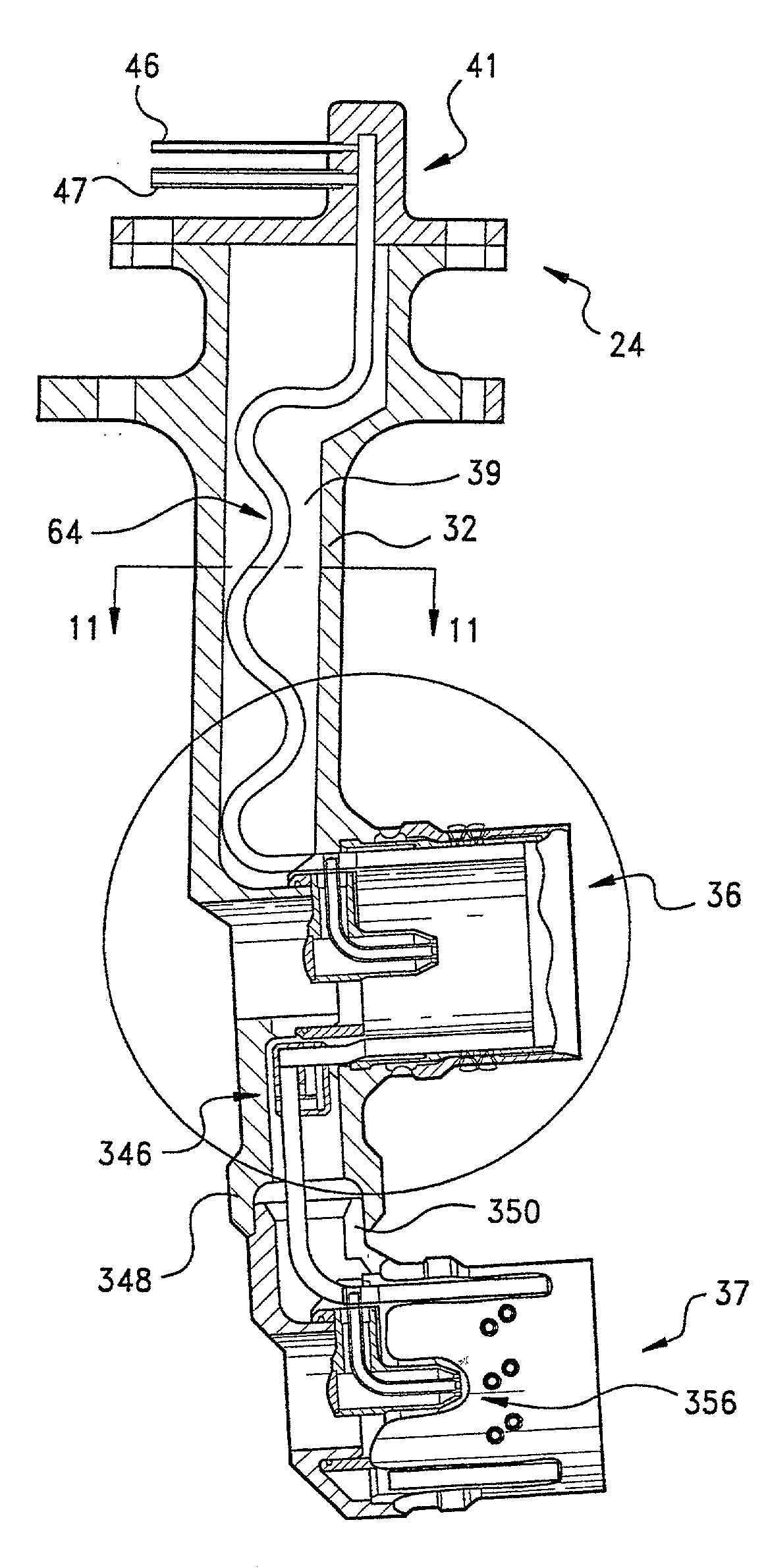Multi-circuit, multi-injection point atomizer
a fuel injector and injection point technology, applied in the direction of machines/engines, lighting and heating apparatus, instruments, etc., can solve the problems of increasing and occupying valuable space in and around the combustion chamber, etc., to increase the fuel efficiency, increase the efficiency of the fuel injection, and increase the overall cost of the injector.
- Summary
- Abstract
- Description
- Claims
- Application Information
AI Technical Summary
Benefits of technology
Problems solved by technology
Method used
Image
Examples
Embodiment Construction
[0034] Referring to the drawings and initially to FIG. 1, a portion of a combustion engine is indicated generally at 20. The upstream, front wall of a dual combustion chamber for the engine is shown at 22, and a plurality of fuel injectors, for example as indicated generally at 24, are shown supported within the combustion chamber. The fuel injectors 24 atomize and direct fuel into the combustion chamber 22 for burning. Combustion chamber 22 can be any useful type of combustion chamber, such as a combustion chamber for a gas turbine combustion engine of an aircraft, however, the present invention is believed useful for combustion chambers for any type of combustion application. In any case, the combustion chamber will not be described herein for sake of brevity, with the exception that as should be known to those skilled in the art, air at elevated temperatures (up to 1300.degree. F. in the combustion chamber of an aircraft), is directed into the combustion chamber to allow combusti...
PUM
 Login to View More
Login to View More Abstract
Description
Claims
Application Information
 Login to View More
Login to View More - R&D
- Intellectual Property
- Life Sciences
- Materials
- Tech Scout
- Unparalleled Data Quality
- Higher Quality Content
- 60% Fewer Hallucinations
Browse by: Latest US Patents, China's latest patents, Technical Efficacy Thesaurus, Application Domain, Technology Topic, Popular Technical Reports.
© 2025 PatSnap. All rights reserved.Legal|Privacy policy|Modern Slavery Act Transparency Statement|Sitemap|About US| Contact US: help@patsnap.com



